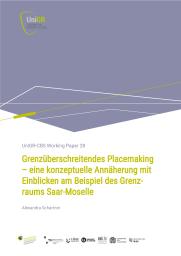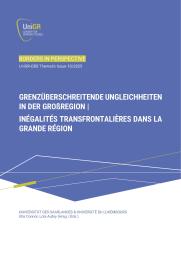Working Paper Vol. 28

The concept of “placemaking” is well established in architectural, urban, and regional planning discourse. It refers to processes through which localities become identity-forming – through spatial design, social practices, or symbolic loading. This working paper offers a first theoretical reflection on the transferability and further development of placemaking in cross-border contexts. It focuses on an initial theoretical approach to cross-border placemaking as an analytical lens for describing site-specific transformation processes along national borders. The Pre-IBA Saar-Moselle (2022-2023) is introduced as a research situation: a curated and experimental planning initiative that served to explore the feasibility of establishing an International Building Exhibition (IBA) in the Greater Region, and more specifically in the Saar-Moselle border area. Through temporary stagings of border localities, narrative framings, and architectural formats, a laboratory space was created in which new forms of placemaking at national borders could be tested. Based on this, the paper develops initial analytical elements for a theoretically grounded exploration of cross-border placemaking. In conclusion, it shows how future research based on case studies in the Saar-Moselle region could contribute to conceptual clarification and interdisciplinary development.



